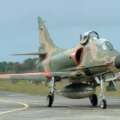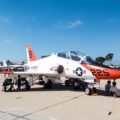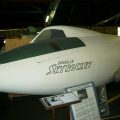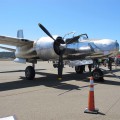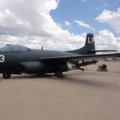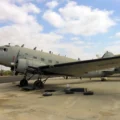Den Douglas X-3 Stiletto var et amerikansk eksperimentelt jetfly fra 1950-tallet med en slank skrog og en lang konisk nese, produsert av Douglas Aircraft Company. Dens primære oppgave var å undersøke designegenskapene til et fly som var egnet for vedvarende supersoniske hastigheter, som inkluderte den første bruken av titan i store flyskrogkomponenter. Douglas designet X-3 med mål om en maksimal hastighet på omtrent 2,000 m.p.h, men den var imidlertid alvorlig underdrevet for dette formålet og kunne ikke engang overstige Mach 1 i planflyging. Selv om forskningsflyet var en skuffelse, brukte Lockheed-designere data fra X-3-testene for Lockheed F-104 Starfighter som brukte en lignende trapesformet vingedesign i et vellykket Mach 2-jagerfly.
Kilde: Douglas X-3 Stiletto på Wikipedia
Flere opplysninger:
Den Douglas X-3 Stiletto was an experimental jet aircraft designed to test the feasibility of a slender fuselage and a low-aspect ratio wing for supersonic flight. The X-3 was developed by the Douglas Aircraft Company in the late 1940s and early 1950s, and flew for the first time in October 1952. The X-3 had a distinctive appearance, with a long, needle-like nose, a thin, tapered wing, and two Westinghouse J34 turbojet engines mounted in pods under the wing. The X-3 was intended to reach speeds of over Mach 2, but it never achieved this goal due to the inadequate thrust of the engines and the high drag of the wing.
The X-3 did provide valuable data on the effects of high-speed flight on the stability and control of aircraft, as well as on the heating and structural problems caused by aerodynamic friction. The X-3 also influenced the design of later aircraft, such as the Lockheed F-104 Starfighter and the North American XB-70 Valkyrie. The X-3 was retired in 1956 after only 51 flights, and is now on display at the National Museum of the United States Air Force in Dayton, Ohio.




